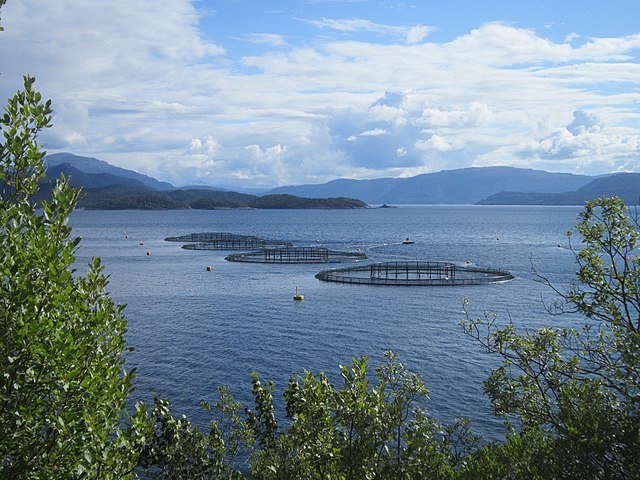
The salmon farming industry is confronted with numerous challenges to ensure sustainable growth. Additionally, salmon farming must decrease greenhouse gas emissions to contribute to international commitments to reduce these gases.
Salmonids have garnered significant attention in Life Cycle Assessment studies, where crucial environmental factors identified include feed and the production system employed. Assessments of greenhouse gas emissions have also been conducted.
In this context, a team of scientists from the RISE Research Institutes of Sweden, Asplan Viak, and SINTEF Ocean conducted a comprehensive assessment of greenhouse gas emissions from Norwegian farmed salmon. They explored key products and proposed innovative improvement measures that could pave the way for a more sustainable future.
While the study, published in the scientific journal Aquaculture, is based on the Norwegian salmon farming industry, the recommendations can be applied globally.
The Landscape of Norwegian Salmon Production
Despite facing challenges, Norwegian farmed salmon remains a coveted product with increasing global demand. The study not only provides a snapshot of the current state but also projects future emissions by expanding baseline results and identifying reduction opportunities based on growth projections.
Key Findings: Understanding Emissions
The assessment identifies the dominant players in Norwegian salmon exports, with gutted salmon to Europe by truck leading in volume, value, and emissions. Salmon and fresh gutted fillets sent to Asia, as well as fillets to the US by air, also significantly contribute to the industry’s carbon footprint. The primary contributors to cumulative greenhouse gas emissions are feed production and overseas airfreighting of fresh products.
A Roadmap for Reduction: Five Crucial Measures
To pave the way for a more sustainable industry, scientists propose five key emission reduction measures. These measures, rooted in existing technology and without a specific order of importance, include:
- Slightly increasing feed efficiency,
- Increased utilization of side streams (by-products) occurring in secondary processing after export,
- Shifting to seafreight over road and air transportation,
- Improving energy efficiency and utilizing cleaner energy sources, and
- Changing feed composition.
If fully implemented, these measures have the potential to reduce current production emissions by 60%, from 5.2 to 2.1 million tonnes of CO2e.
Balancing Growth and Sustainability
Findings suggest that even with a medium growth scenario, more than doubling the volume of farmed salmon to 3.3 million tonnes is possible while simultaneously reducing total sector emissions by 16%. However, achieving larger reductions requires either lower growth or a more ambitious implementation of improvement measures.
Beyond Greenhouse Gases: A Holistic Approach
While greenhouse gas emissions are crucial, the study emphasizes the importance of avoiding the displacement of environmental burdens. A holistic approach considers broader sustainability factors, ensuring progress towards climate neutrality does not inadvertently harm areas such as eutrophication or biodiversity.
Recommendations for a Sustainable Future
In addition to ongoing data collection for continuous monitoring of greenhouse gas emissions, researchers advocate for identifying additional indicators to guide the sector towards climate neutrality and broader sustainability.
This multifaceted approach ensures that the future of Norwegian farmed salmon production aligns with environmental responsibility and long-term viability.
The study was funded by the Norwegian Seafood Research Fund (FHF).
Contact
Friederike Ziegler
RISE Research Institutes of Sweden, Agriculture and Food
PO Box 5401, 402 29 Göteborg, Sweden
Email: friederike.ziegler@ri.se
Reference (open access)
Friederike Ziegler, Andrea Arntzen Nistad, Markus Langeland, Yannic Wocken, Erik Skontorp Hognes, Shraddha Mehta. 2023. Greenhouse gas emission reduction opportunities for the Norwegian salmon farming sector – can they outweigh growth? Aquaculture, 2023, 740431, ISSN 0044-8486,
https://doi.org/10.1016/j.aquaculture.2023.740431.

